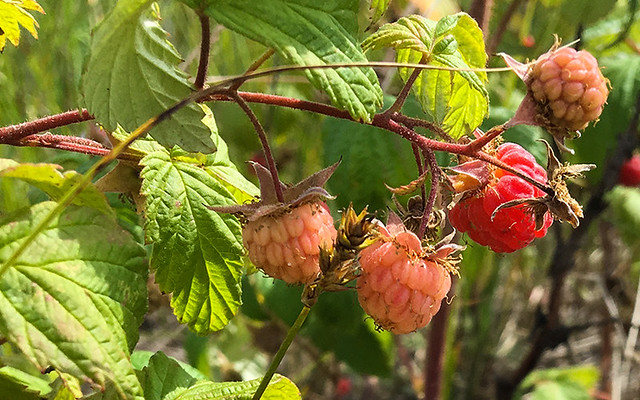Eudicots

Willow Species
Salix spp.


2 POINTS
Fact: The many species of willow in the boreal forest often hybridize, making them notoriously difficult to identify.

Red Osier Dogwood
Cornus stolonifera

3 POINTS
Fact: Dogwood in indicative of nutrient rich sites in the boreal forest and is preferred winter browse for many ungulates.

Wild Rose
Rosa acicularis


2 POINTS
Fact: Generally found in patches of sun, wild rose brings a sweet smell and splash of colour to the boreal forest when it blooms.

Wild Red Raspberry
Rubus idaeus


1 POINTS
Fact: Wild red raspberry is a biennial plant-it grows a flowerless stalk one year, which then produces fruit and dies the next year.

Common Blueberry
Vaccinium myrtilloides


3 POINTS
Fact: Blueberry loves sandy, acidic areas and often grows near conifers because the trees’ fallen needles acidify the soil.

Paper Birch
Betula papyrifera


2 POINTS
Fact: Birch is an early successional species, meaning that it is one of the first trees to regrow after a disturbance like wildfire.